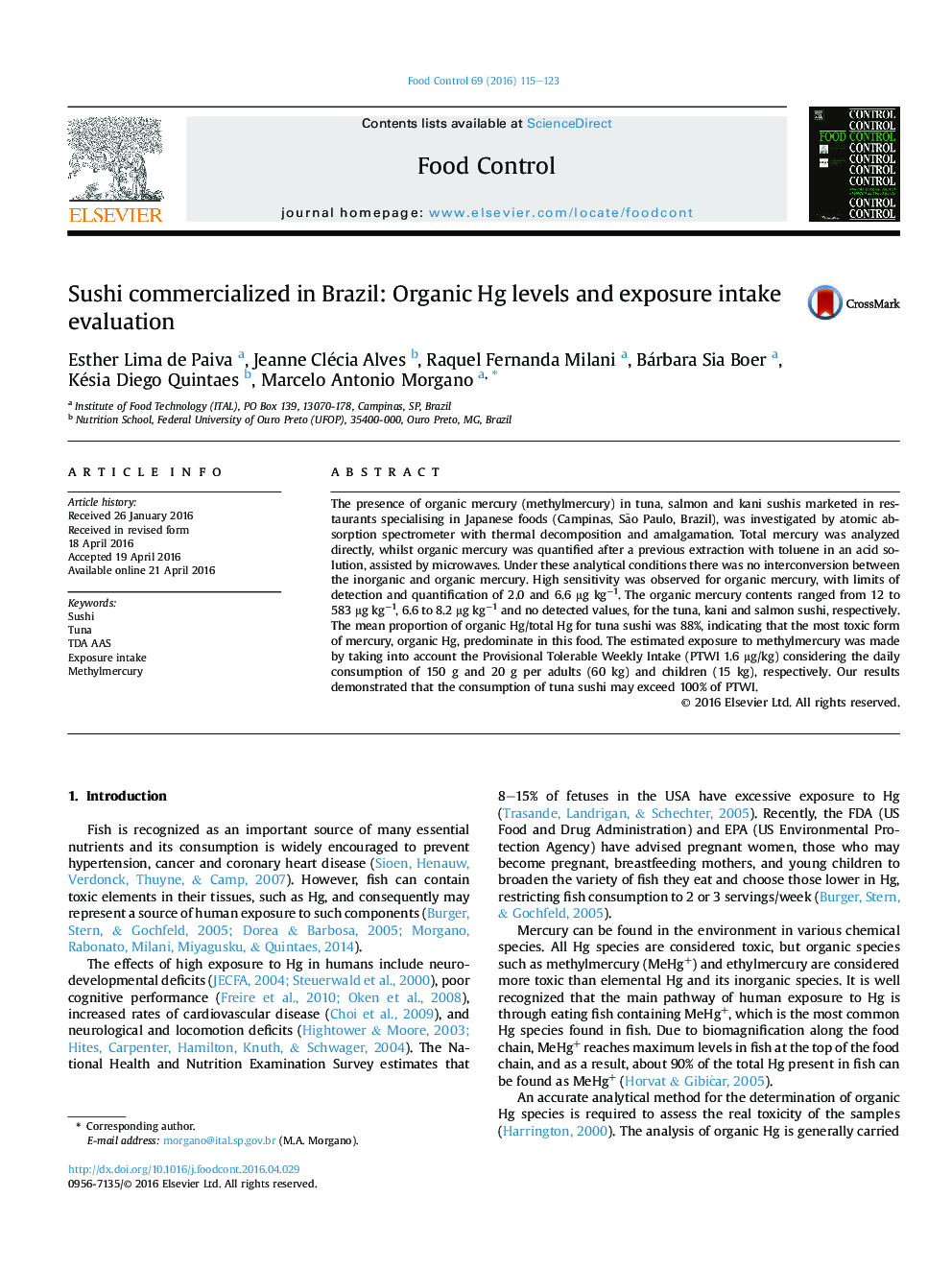| Article ID | Journal | Published Year | Pages | File Type |
|---|---|---|---|---|
| 6390023 | Food Control | 2016 | 9 Pages |
Abstract
The presence of organic mercury (methylmercury) in tuna, salmon and kani sushis marketed in restaurants specialising in Japanese foods (Campinas, São Paulo, Brazil), was investigated by atomic absorption spectrometer with thermal decomposition and amalgamation. Total mercury was analyzed directly, whilst organic mercury was quantified after a previous extraction with toluene in an acid solution, assisted by microwaves. Under these analytical conditions there was no interconversion between the inorganic and organic mercury. High sensitivity was observed for organic mercury, with limits of detection and quantification of 2.0 and 6.6 μg kgâ1. The organic mercury contents ranged from 12 to 583 μg kgâ1, 6.6 to 8.2 μg kgâ1 and no detected values, for the tuna, kani and salmon sushi, respectively. The mean proportion of organic Hg/total Hg for tuna sushi was 88%, indicating that the most toxic form of mercury, organic Hg, predominate in this food. The estimated exposure to methylmercury was made by taking into account the Provisional Tolerable Weekly Intake (PTWI 1.6 μg/kg) considering the daily consumption of 150 g and 20 g per adults (60 kg) and children (15 kg), respectively. Our results demonstrated that the consumption of tuna sushi may exceed 100% of PTWI.
Keywords
Related Topics
Life Sciences
Agricultural and Biological Sciences
Food Science
Authors
Esther Lima de Paiva, Jeanne Clécia Alves, Raquel Fernanda Milani, Bárbara Sia Boer, Késia Diego Quintaes, Marcelo Antonio Morgano,
